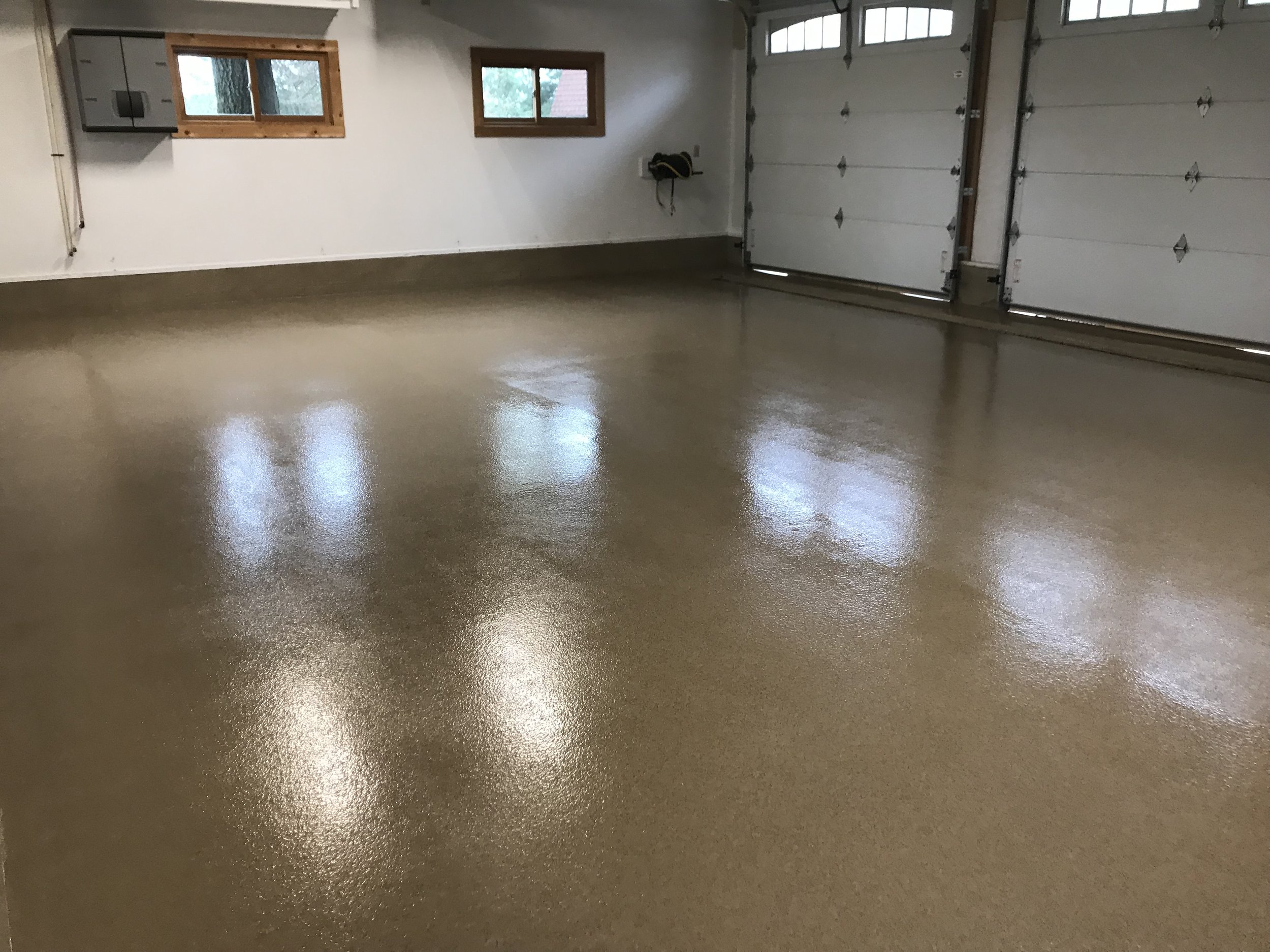Introduction to Concrete Floor Resin Coating
Concrete floor resin coating is a popular choice for both residential and commercial spaces due to its durability, aesthetic appeal, and protective properties. This guide will show you different types of resin coatings, their benefits, the installation process, maintenance tips, and common mistakes to avoid. Additionally, it will address frequently asked questions to provide a thorough understanding of concrete floor resin coatings.

What is Concrete Floor Resin Coating?
Concrete floor resin coating is a protective layer applied to concrete surfaces to enhance their durability, appearance, and resistance to wear and tear. Resin coatings are typically made from synthetic materials such as epoxy, polyurethane, or polyaspartic, which provide a seamless and glossy finish. These coatings are used in a variety of settings, including garages, warehouses, retail spaces, and residential homes.
Resin coatings are known for their exceptional adhesion to concrete surfaces, creating a strong bond that enhances the floor’s structural integrity. The coatings are available in various colors and finishes, allowing for customization to match any design aesthetic. This versatility makes resin coatings an attractive option for both functional and decorative purposes.
One of the primary benefits of resin coatings is their ability to protect concrete floors from damage caused by chemicals, moisture, and heavy traffic. The coatings create a barrier that prevents stains, cracks, and other forms of wear, extending the lifespan of the concrete floor. This protective layer is particularly valuable in industrial and commercial settings where the floors are subjected to harsh conditions.
In addition to their protective properties, resin coatings also improve the cleanliness and hygiene of concrete floors. The smooth, non-porous surface is easy to clean and maintain, reducing the accumulation of dust, dirt, and bacteria. This feature is especially important in environments that require high standards of cleanliness, such as hospitals, laboratories, and food processing facilities.
The installation of resin coatings involves several steps, including surface preparation, primer application, and the layering of the resin material. Proper installation is crucial to achieving a durable and long-lasting finish. Whether undertaken as a DIY project or by a professional, understanding the process is essential for successful application.

Benefits of Concrete Floor Resin Coating
Concrete floor resin coatings offer a multitude of benefits that make them an attractive option for various applications. These benefits contribute to the growing popularity of resin coatings in both residential and commercial settings.
Durability and Longevity: Resin coatings significantly enhance the durability and lifespan of concrete floors. They provide a tough, resilient surface that can withstand heavy traffic, impacts, and abrasions. This durability is particularly beneficial in industrial and commercial environments where floors are subjected to constant wear and tear.
Chemical and Stain Resistance: One of the standout features of resin coatings is their resistance to chemicals and stains. This property makes them ideal for environments where floors are exposed to spills, oils, and harsh chemicals. The protective layer prevents these substances from penetrating the concrete, making cleanup easier and reducing the risk of long-term damage.
Aesthetic Appeal: Resin coatings are available in a wide range of colors and finishes, allowing for creative and customized designs. Whether opting for a sleek, glossy finish or a more textured appearance, resin coatings can enhance the visual appeal of any space. This versatility makes them suitable for both decorative and functional purposes.
Easy Maintenance: The smooth, non-porous surface of resin-coated floors is easy to clean and maintain. Regular sweeping and mopping are usually sufficient to keep the floor looking pristine. Additionally, the coatings resist dust and dirt accumulation, contributing to a cleaner and more hygienic environment.
Moisture and Waterproofing: Resin coatings create a waterproof barrier that protects concrete floors from moisture damage. This feature is particularly important in areas prone to water exposure, such as basements, garages, and industrial settings. By preventing water infiltration, resin coatings help to avoid issues such as mold growth, cracking, and structural damage.
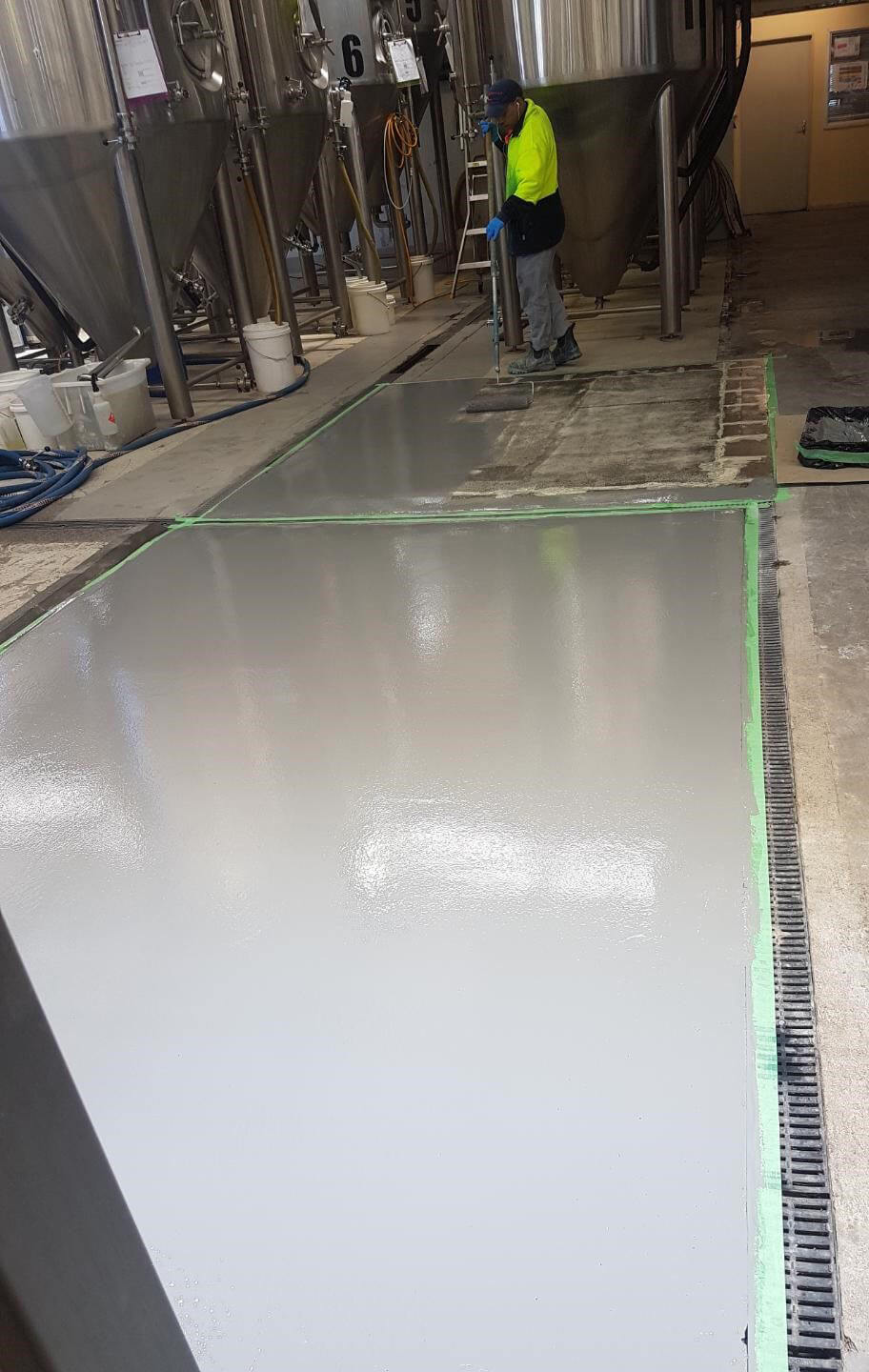
Types of Resin Coatings
There are several types of resin coatings available, each with its own set of characteristics and benefits. Understanding the differences between these types can help in selecting the most suitable option for specific applications.
Epoxy Resin Coating
Epoxy resin is one of the most commonly used types of resin coatings. It is known for its excellent adhesion, durability, and resistance to chemicals and abrasions. Epoxy coatings are typically applied in multiple layers to achieve a thick, seamless finish that can withstand heavy use.
Versatility: Epoxy coatings are versatile and can be used in a variety of settings, including garages, warehouses, and commercial spaces. They are available in a range of colors and finishes, allowing for customization to match any aesthetic preference.
Durability: The durability of epoxy resin makes it ideal for high-traffic areas. It can withstand impacts, heavy loads, and abrasions without showing signs of wear. This resilience ensures that the floor remains in good condition for an extended period.
Chemical Resistance: Epoxy coatings are highly resistant to chemicals, making them suitable for environments where spills and exposure to harsh substances are common. This resistance protects the underlying concrete from damage and makes cleaning easier.
Easy Maintenance: The smooth, glossy surface of epoxy coatings is easy to clean and maintain. Regular sweeping and mopping are usually sufficient to keep the floor looking pristine. This low maintenance requirement is a significant advantage in busy environments.
Aesthetic Options: Epoxy resin coatings offer a wide range of aesthetic options, including solid colors, metallic finishes, and decorative patterns. This versatility allows for creative designs that can enhance the visual appeal of any space.
Polyurethane Resin Coating
Polyurethane resin coatings are another popular choice for concrete floors. They are known for their flexibility, UV resistance, and high gloss finish. Polyurethane coatings are often used in areas that require a durable, yet aesthetically pleasing, flooring solution.
Flexibility: Polyurethane coatings are more flexible than epoxy coatings, making them less prone to cracking and chipping. This flexibility is particularly beneficial in environments where the floor is subjected to temperature fluctuations and mechanical stresses.
UV Resistance: Unlike epoxy coatings, polyurethane coatings are highly resistant to UV rays. This resistance prevents the coating from yellowing or degrading when exposed to sunlight, making it suitable for outdoor applications or areas with significant natural light.
High Gloss Finish: Polyurethane coatings provide a high gloss finish that enhances the visual appeal of the floor. This glossy surface not only looks attractive but also makes the floor easier to clean and maintain.
Abrasion Resistance: Polyurethane coatings offer excellent abrasion resistance, making them ideal for high-traffic areas. They can withstand impacts and wear without losing their aesthetic or functional properties.
Chemical Resistance: While not as chemically resistant as epoxy, polyurethane coatings still offer good resistance to a variety of substances. This resistance makes them suitable for environments where occasional spills and exposure to chemicals occur.
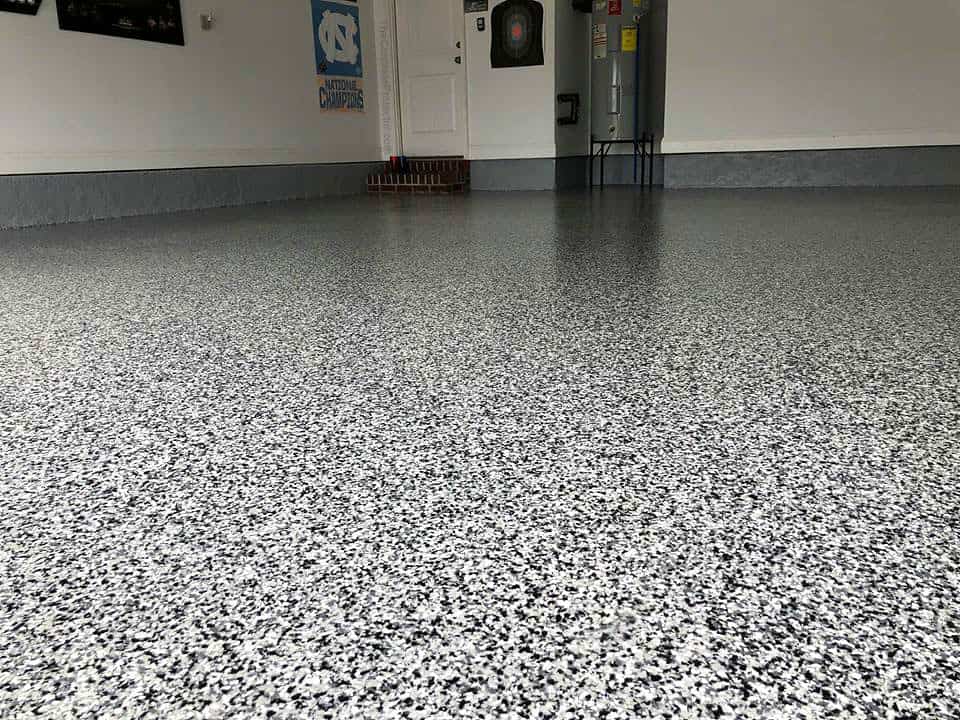
Polyaspartic Resin Coating
Polyaspartic resin coatings are a relatively new addition to the range of resin coatings available. They are known for their rapid curing times, high durability, and UV resistance. Polyaspartic coatings are ideal for projects that require a quick turnaround without compromising on quality.
Rapid Curing: One of the most significant advantages of polyaspartic coatings is their rapid curing time. They can cure within a few hours, allowing for a faster return to service. This quick turnaround is particularly beneficial for commercial and industrial projects.
High Durability: Polyaspartic coatings offer high durability and resistance to impacts, abrasions, and chemicals. This durability makes them suitable for high-traffic areas and environments where the floor is subjected to harsh conditions.
UV Resistance: Like polyurethane coatings, polyaspartic coatings are highly resistant to UV rays. This resistance prevents yellowing and degradation, making them suitable for both indoor and outdoor applications.
Versatility: Polyaspartic coatings can be applied in a wide range of temperatures and humidity levels, providing flexibility in application conditions. This versatility allows for year-round installations, regardless of weather conditions.
Aesthetic Appeal: Polyaspartic coatings offer a variety of aesthetic options, including clear and colored finishes. They can be used to create decorative patterns and designs, enhancing the visual appeal of the floor.
Acrylic Resin Coating
Acrylic resin coatings are another option for concrete floors, known for their quick drying times and ease of application. They are commonly used for decorative purposes and in environments where a less robust but visually appealing coating is sufficient.
Quick Drying: Acrylic coatings dry quickly, allowing for a faster return to service. This quick drying time is advantageous for projects with tight schedules and limited downtime.
Ease of Application: Acrylic coatings are easy to apply, making them a popular choice for DIY projects. They can be applied using a roller or sprayer, providing a smooth and even finish.
Aesthetic Options: Acrylic coatings are available in a wide range of colors and finishes, allowing for creative and decorative designs. They can be used to enhance the visual appeal of residential and commercial spaces.
Cost-Effective: Acrylic coatings are generally more affordable than other types of resin coatings. This cost-effectiveness makes them an attractive option for budget-conscious projects.
Moderate Durability: While not as durable as epoxy or polyurethane coatings, acrylic coatings still offer moderate durability and resistance to wear. They are suitable for areas with light to moderate traffic.

Choosing the Right Resin Coating
Selecting the right resin coating for your concrete floor depends on several factors, including the intended use, environmental conditions, and desired aesthetic. Understanding the characteristics and benefits of each type of resin coating can help in making an informed decision.
Intended Use: Consider the intended use of the floor when choosing a resin coating. For example, epoxy coatings are ideal for industrial settings, while polyurethane coatings are better suited for areas with significant sunlight exposure.
Environmental Conditions: Evaluate the environmental conditions where the coating will be applied. Factors such as temperature, humidity, and UV exposure can influence the performance and longevity of the coating.
Desired Aesthetic: Determine the desired aesthetic for the floor. Each type of resin coating offers different color and finish options, allowing for customization to match the overall design of the space.
Budget: Consider the budget for the project. While some resin coatings may be more expensive, they often offer greater durability and performance. Balancing cost with the required level of protection and aesthetics is crucial.
Professional Advice: Consult with a professional to assess the specific needs of your project. Professionals can provide valuable insights and recommendations based on their experience and expertise.
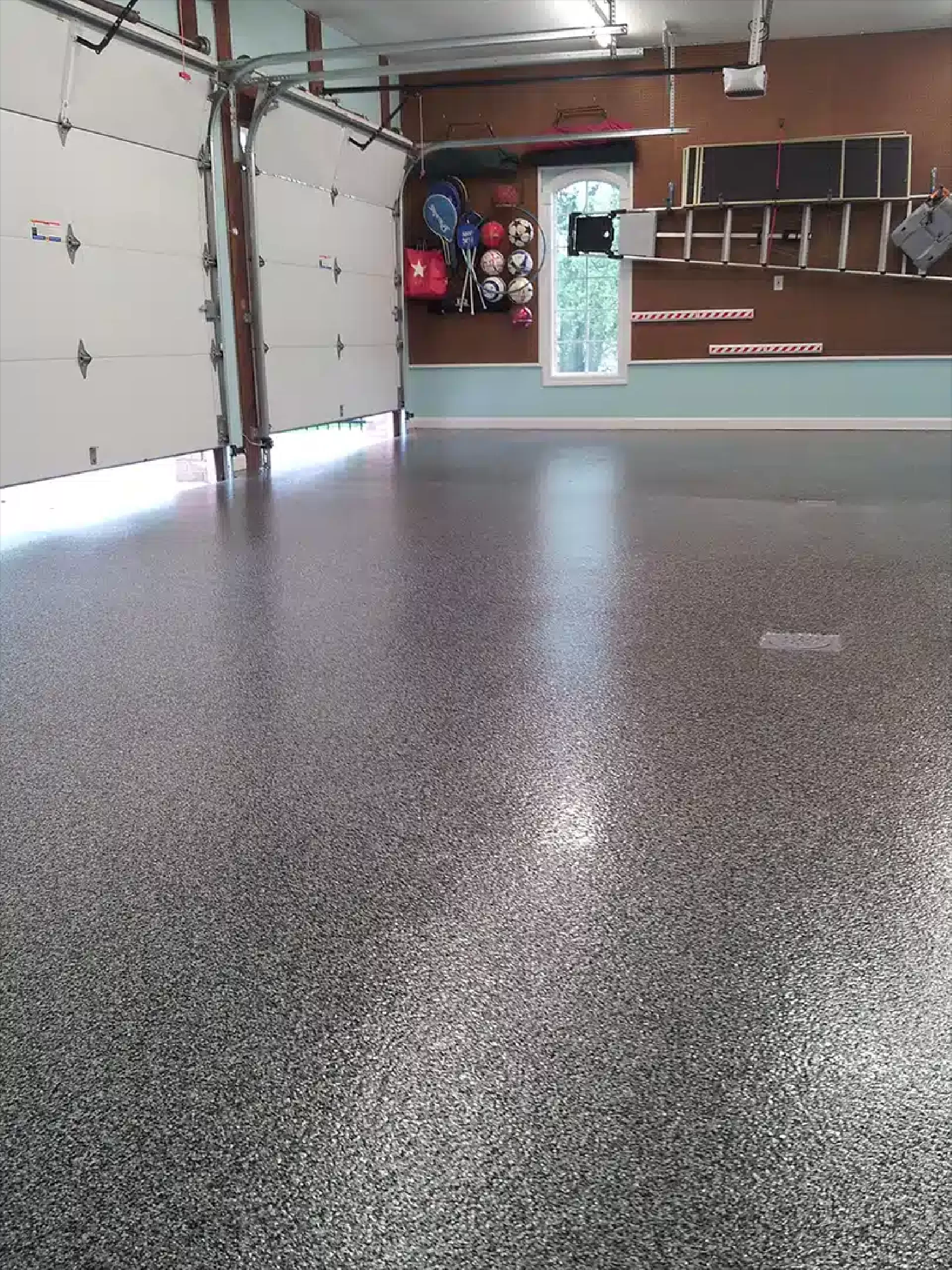
Installation Process of Resin Coatings
The installation process of resin coatings involves several critical steps, each essential to achieving a durable and long-lasting finish. Proper preparation and application are key to the success of the project.
Surface Preparation
Cleaning: The concrete surface must be thoroughly cleaned to remove any dirt, dust, grease, or other contaminants. This step ensures that the resin coating adheres properly to the concrete. Use a degreaser and a pressure washer to clean the surface thoroughly.
Repairing: Inspect the concrete for any cracks, holes, or imperfections. Repair any damage using a suitable concrete patching compound. Allow the repairs to cure fully before proceeding with the next steps.
Grinding: Use a concrete grinder to roughen the surface, creating a texture that promotes adhesion. Grinding also helps to remove any remaining contaminants and smoothens out the surface for a uniform finish.
Moisture Testing: Conduct a moisture test to ensure that the concrete is dry enough for the resin coating. Excess moisture can interfere with the adhesion and curing process, leading to potential issues down the line. Use a moisture meter to measure the moisture content of the concrete.
Priming: Apply a primer to the prepared concrete surface. The primer acts as a bonding agent between the concrete and the resin coating, enhancing adhesion and providing a smooth base for the coating. Allow the primer to dry according to the manufacturer’s instructions.
Mixing and Application
Mixing: Properly mix the resin and hardener components according to the manufacturer’s instructions. Use a mechanical mixer to ensure a thorough and consistent mixture. Mixing the components correctly is crucial for the performance and curing of the coating.
Application: Begin applying the resin coating using a roller or squeegee. Work in small sections to ensure even coverage and to avoid the resin from curing too quickly. Apply the coating in thin, even layers, spreading it uniformly across the surface.
Layering: Depending on the type of resin coating, multiple layers may be required. Allow each layer to cure fully before applying the next. Follow the manufacturer’s guidelines for the number of layers and curing times.
Edging: Use a brush to apply the resin coating to the edges and corners of the floor. Ensuring full coverage in these areas is essential for a uniform and seamless finish.
Finishing: Apply the final layer of the resin coating, ensuring a smooth and even finish. This layer provides the final aesthetic and protective qualities of the coating. Allow the coating to cure fully before subjecting it to foot traffic or placing any objects on the surface.

Curing Process
Initial Curing: Allow the resin coating to cure according to the manufacturer’s instructions. The initial curing time is typically 24-48 hours, depending on the type of resin and environmental conditions. During this time, avoid any foot traffic or placing objects on the floor.
Full Curing: The full curing process can take several days to a week. During this time, the coating reaches its maximum hardness and durability. Ensure that the floor is not subjected to heavy traffic or loads until the curing process is complete.
Temperature and Humidity Control: Maintain optimal temperature and humidity levels during the curing process. Extreme temperatures or high humidity can affect the curing time and the final properties of the coating.
Ventilation: Ensure proper ventilation in the area during the curing process. Good airflow helps to dissipate any fumes and speeds up the curing process.
Inspection: Once the coating is fully cured, inspect the surface for any imperfections or areas that may need touch-ups. Address any issues promptly to ensure a uniform and high-quality finish.
Post-Installation Care
Initial Cleaning: After the coating is fully cured, clean the surface with a mild detergent and water to remove any dust or debris. Avoid using harsh chemicals that could damage the coating.
Furniture Placement: When moving furniture or equipment onto the newly coated floor, use protective pads to prevent scratches and damage. Lift heavy objects instead of dragging them across the surface.
Regular Maintenance: Establish a regular cleaning and maintenance routine to keep the resin-coated floor in optimal condition. Regular sweeping and mopping with a mild cleaner are usually sufficient to maintain the floor’s appearance.
Spill Management: Promptly clean up any spills to prevent staining or damage to the coating. Use a soft cloth or mop to absorb the spill and clean the area with a mild detergent.
Inspections and Touch-ups: Regularly inspect the floor for signs of wear or damage. Perform touch-ups as needed to maintain the protective and aesthetic qualities of the coating.
DIY vs. Professional Installation
Skill Level: Assess your skill level and experience before deciding between DIY and professional installation. While DIY installation can save on labor costs, professional installation ensures a higher quality finish and fewer potential issues.
Time Commitment: Consider the time commitment involved in a DIY installation. Preparing the surface, applying the coating, and allowing for curing times can be time-consuming tasks that require patience and dedication.
Cost Considerations: Compare the costs of DIY installation versus hiring a professional. While DIY can save on labor costs, the purchase of tools and materials can add to the overall cost. Professional installation may offer a cost-effective solution with a high-quality finish.
Tools and Equipment: Ensure you have the necessary tools and equipment for a successful installation. These may include a concrete grinder, mechanical mixer, rollers, and brushes. Renting or purchasing these tools can add to the overall cost of the project.
Professional Expertise: A professional installer brings expertise and experience, potentially identifying and addressing issues that may arise during the installation process. Hiring a professional can provide peace of mind and ensure a long-lasting, high-quality finish.
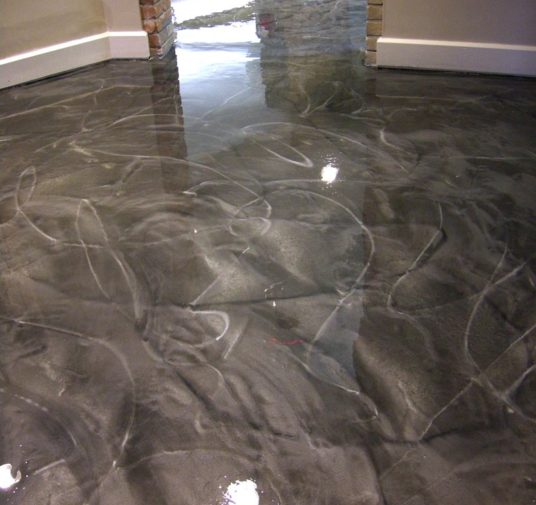
Maintaining Concrete Floor Resin Coating
Proper maintenance is essential to preserve the appearance and functionality of concrete floor resin coatings. Regular care ensures the floor remains resilient and attractive over time.
Regular Cleaning
Sweeping: Sweep the floor regularly with a soft-bristle broom to remove dust and debris. This prevents dirt from scratching the surface and keeps the floor looking clean and polished.
Mopping: Use a damp mop with a mild, pH-neutral cleaner specifically designed for resin-coated floors. Avoid excessive water, as standing water can damage the coating. Wring out the mop thoroughly before use to prevent water accumulation.
Spot Cleaning: For spills and stains, wipe up immediately with a soft cloth or sponge. Use a mild cleaner if necessary, but avoid harsh chemicals and abrasive scrubbers that can damage the finish.
Avoid Harsh Cleaners: Do not use ammonia, bleach, or other harsh chemicals on resin-coated floors. These substances can strip the finish and cause discoloration or damage to the coating.
Drying: After mopping or spot cleaning, ensure the floor is thoroughly dried. Use a dry cloth or mop to remove any remaining moisture, particularly in seams and edges where water can seep in.
Preventing Damage
Furniture Pads: Use felt pads or coasters under furniture and equipment to prevent scratches and dents. Regularly check and replace the pads to ensure they remain effective.
Avoiding Sharp Objects: Keep sharp objects and high heels off the resin-coated floor to avoid punctures and scratches. Use a cutting board or protective mat when handling sharp tools or items.
Protective Mats: Place protective mats in high-traffic areas and near entrances to reduce wear and tear. These mats can catch dirt and debris, preventing them from being tracked onto the resin-coated floor.
Maintenance Products: Use maintenance products specifically designed for resin-coated floors to refresh and protect the finish. Follow the manufacturer’s recommendations for application and frequency.
Reapplying Sealer: Periodically reapply a protective sealer to maintain the floor’s protective barrier. This helps preserve the finish and extends the floor’s lifespan.
Addressing Damage
Minor Scratches: For minor scratches, use a touch-up kit designed for resin-coated floors. These kits usually include a resin or filler that can be applied to the scratch and buffed to blend with the surrounding area.
Deep Scratches: Deep scratches may require sanding and refinishing to restore the surface. Sand the affected area gently and apply a new coat of resin to protect the floor.
Water Damage: If water damage occurs, address it immediately to prevent further issues. Remove the affected area and allow it to dry completely before repairing or replacing the damaged resin coating.
Professional Repair: For extensive damage, consider hiring a professional to assess and repair the floor. Professional expertise can ensure the damage is addressed correctly and prevent future problems.
Preventative Measures: Implement preventative measures, such as using mats and controlling humidity, to minimize the risk of damage and maintain the floor’s integrity.

Long-Term Care
Regular Inspections: Regularly inspect the floor for signs of wear, damage, or moisture issues. Early detection allows for prompt repairs and prevents further deterioration.
Seasonal Maintenance: Adjust maintenance routines seasonally to account for changes in humidity and temperature. This helps protect the resin-coated floor from seasonal fluctuations that can affect its condition.
Professional Maintenance: Consider professional maintenance services for deep cleaning and refinishing as needed. Professional care can enhance the floor’s longevity and appearance.
Education: Educate household members and employees about proper care and maintenance to ensure everyone contributes to preserving the resin-coated floor. Clear guidelines can prevent accidental damage and promote consistent upkeep.
Enjoying the Benefits: With proper care and maintenance, resin-coated floors can provide years of durability, beauty, and functionality. Enjoy the benefits of this versatile and protective flooring choice while ensuring it remains in excellent condition.
Environmental Considerations
Eco-Friendly Options: Consider using eco-friendly resin coatings that have low VOC (volatile organic compound) emissions. These coatings are better for the environment and contribute to healthier indoor air quality.
Recycling: When replacing resin-coated floors, consider recycling the old materials if possible. Many types of resin can be recycled, reducing waste and environmental impact.
Sustainable Practices: Implement sustainable practices in the maintenance and care of resin-coated floors. Use eco-friendly cleaning products and methods that minimize environmental impact.
Energy Efficiency: Resin-coated floors can contribute to energy efficiency by improving insulation and reducing the need for artificial lighting. The reflective surface of glossy coatings can enhance natural light distribution, reducing energy consumption.
Lifespan: The long lifespan of resin-coated floors reduces the need for frequent replacements, minimizing the environmental impact associated with flooring materials and installation.
Related articles:
- Concrete Floor Resin Coating
- Concrete Floor Paint Preparation
- Stained Concrete Floor Designs
- How To Paint A Concrete Floor Inside
- Concrete Floor In Garage
- Polished Concrete Floor Ideas
- Gypsum Concrete Floor Underlayment
- Polishing Concrete Floor By Hand
- Concrete Floor Paint Prep
- Polished Concrete Floors For Patios
